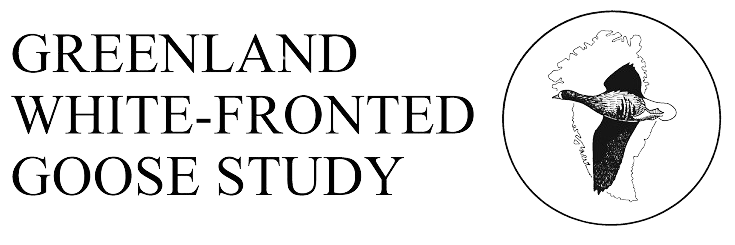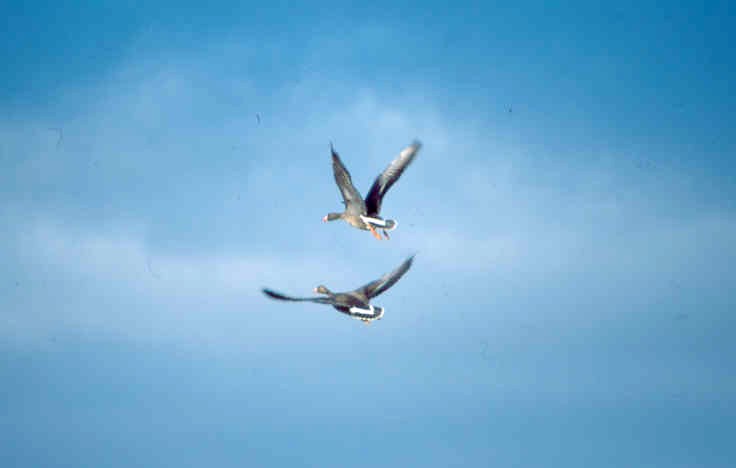Broubster Leans SSSI has just become the lastet reserve to be acquired by the Royal Society for the Protection of Birds, adding another layer of site sfaeguard to this important wetland and the most regularly used roost site for the Westfield flock of Caithness wintering Greenland White-fronted Geese.
The press release reads:
Bright future for mainland Britain’s most northerly wetlands
One of the most important breeding sites in northern Britain for wading birds is to become the RSPB’s latest nature reserve thanks to generous membership donations.
Broubster Leans – a rich and beautiful wetland that has developed on the floodplain of the Forss Water 7 km south west of Thurso – is the latest addition to RSPB’s suite of nature reserves in Scotland that will be managed for the benefit of the wide variety of birds, plants and insects that have made this habitat their home.
The site is an ideal place for wildlife, due to its diverse mosaic of wet grasslands, pools, mires and drier pastures, and this is reflected in the multiple designations it already carries, including Site of Special Scientific Interest (SSSI), Special Protection Area (SPA) and Special Area of Conservation (SAC). Traditional farming, particularly extensive cattle grazing, has been essential in maintaining this mixture of habitats.
Throughout the year hen harriers, twite and short-eared owls are present; greenshank, golden plover, lapwing, snipe, redshank and common sandpiper breed on the reserve in the summer months, and in winter it serves as a refuge for two hundred Greenland white-fronted geese and up to 80 whooper swans. Even the rare spotted crake and the water vole can be found on the reserve.
However, in the past decade the number of waders in the area has halved from around 100 pairs to just 50. In coming years RSPB aims to reverse this decline and get the wader population back up to about 250 pairs.
The new reserve – 200 ha of which has been bought, with a further 100 ha under a management agreement – forms about one fifth of the total wetland area at Broubster. Management of the reserve will focus on working with local farmers to improve grazing and cutting of the wet centre of the Leans and to reinstate an arable rotation on the drier parts of the wetland. RSPB hopes that this will demonstrate how sympathetic farming can work in tandem with nature conservation to produce benefits for wildlife, farmers and the future of the countryside.
Dr Peter Mayhew, RSPB’s senior conservation manager for north Scotland, said: “For many years RSPB has worked hard to acquire a reserve in this magical part of Scotland where some of our best loved species can thrive, so this is a fantastic opportunity for us.
“Over the last twenty years we have seen an alarming decrease in some of our wader and farmland bird populations, coupled to the loss of wetland habitat and changes in land management practices. At Broubster the delicate balance of pasture, fen and wetland that have been established over centuries of human interaction with the land makes this an exceptional area despite it being one of the toughest farming environments in the UK. Working with local farmers and crofters, we hope to restore the habitats for breeding birds like lapwing, snipe and redshank whilst maintaining the wintering populations of geese and swans. We also hope to bring back the great yellow bumble bee to Broubster, one of the most threatened insects in Britain, a few colonies of which are found close by.
“Caithness has nationally important populations of waders on a number of different sites scattered throughout the County. Broubster will be a demonstration project to trial new management techniques to help restore these other wetlands, in partnership with local farmers. There will also be a new vacancy for a reserve warden at Broubster to take forward management on this site and throughout the Caithness wetlands. This will be a great opportunity for someone to work for wetlands in the north and create a bright future for wintering and breeding birds. With the development of modest visitor facilities at Broubster and elsewhere we would hope to attract many more birdwatchers to the area.”
ENDS.
For more information/interviews/images, please contact RSPB Scotland’s Head of Media James Reynolds on 0131 311 6500/07725065186.
Notes.
The Leans is a 1,500 ha floodplain located about 7 km southwest of Thurso. It is an area of fen/mire/grassland within a farmed landscape – typical of the Caithness wetlands. It is part designated as a SSSI, SPA, SAC, RAMSAR and is part of the Caithness Lochs Important Bird Area. The main notification features are blanket bog, transition mire/quaking bog, breeding birds and wintering wildfowl. The Caithness wetlands have been identified as one of the most important wetland areas in the UK for intensive conservation action by the RSPB.
Broubster Leans is threatened due to agricultural abandonment of the wetter areas, less sympathetic management of the drier sections and afforestation of abandoned areas. Essentially, on the wetter parts of the site the problem is lack of grazing and cutting of the fen vegetation. This leads to build up of plant material that discourages waders. We would address this by working with farmers to get cutting and grazing onto these sites. On drier parts of the reserve, the problem is too much sheep grazing. We will reduce stock numbers and introduce arable management that should help passerines as well as waders like lapwings. In the long-term, we would hope to encourage corncrakes and great yellow bumblebee to the site.
Important non-avian species present at the site include otter and the nationally scarce narrow small-reed Calamagrostis stricta. The wetland bird population of Broubster Leans has historically been notable in terms of the number of species it supports. Nine species of wader (oystercatcher, lapwing, snipe, curlew, redshank, greenshank, wood sandpiper, common sandpiper and dunlin) have bred at the site. In addition, the site has attracted calling spotted crake and summering common crane and marsh harrier. Hen harriers use the site throughout the year and short-eared owls are regular in good vole years but do not breed there. The site regularly supports a wintering population of 200 Greenland white-fronted geese, which is at the 1% threshold for national importance for this species. The trend for this flock is a slow increase, in contrast to the national population. Broubster Leans is also regionally important for other wintering wildfowl such as whooper swan, Icelandic greylag goose and a range of duck species. It is also suitable for great yellow bumblebee management, for which RSPB is a lead BAP partner.
Although designated site condition monitoring reports the Leans as being in favourable condition, this is not the case for breeding waders. In 2005, the IBA (620 ha) held 44 pairs of waders: some 40% of the mid-1990s level of 105 pairs. With appropriate management, wader populations could be increased to 250+ pairs based on densities in similar habitats elsewhere.
The Royal Society for the Protection of Birds Scotland
Dunedin House
25 Ravelston Terrace
Edinburgh
EH4 3TP

